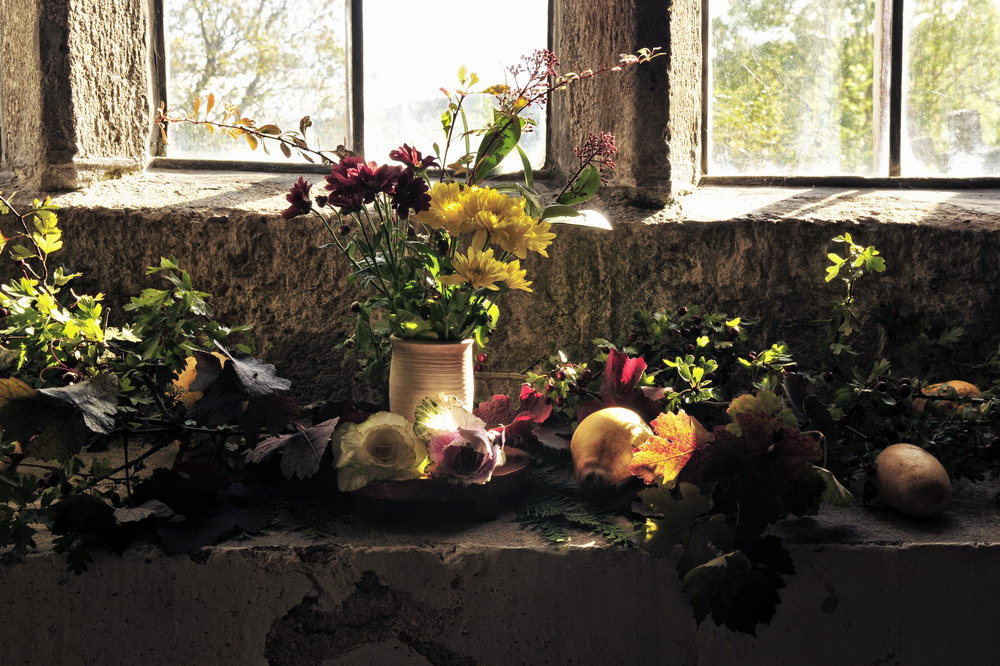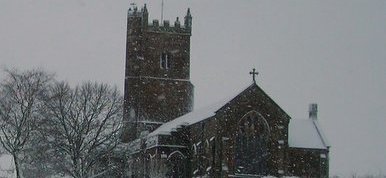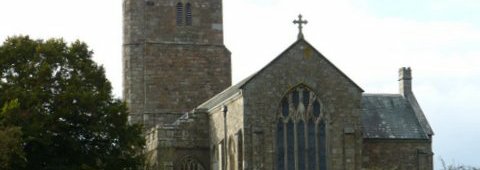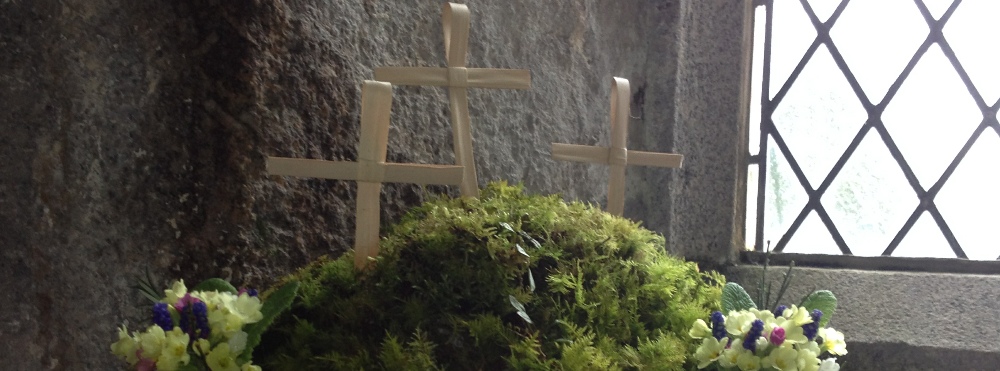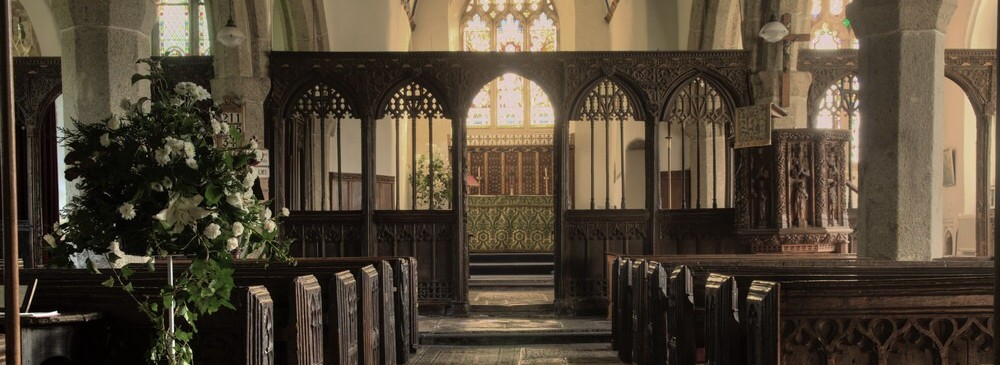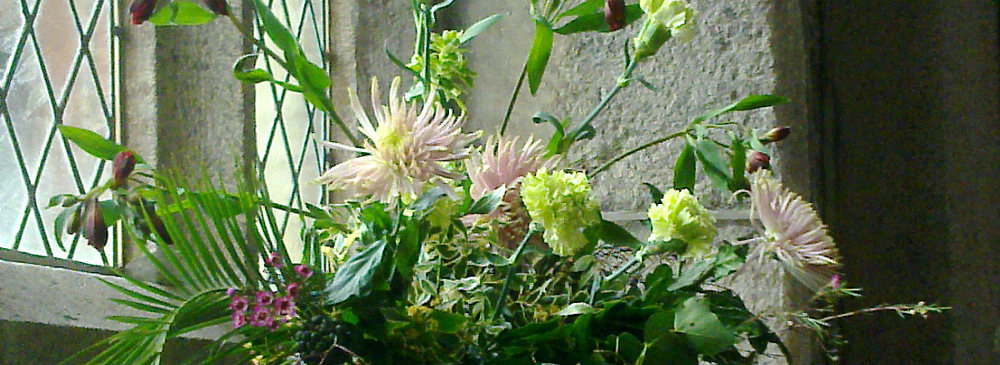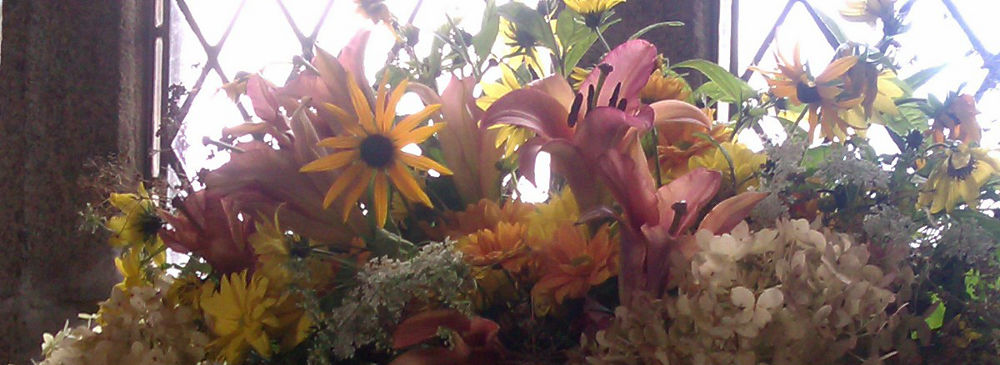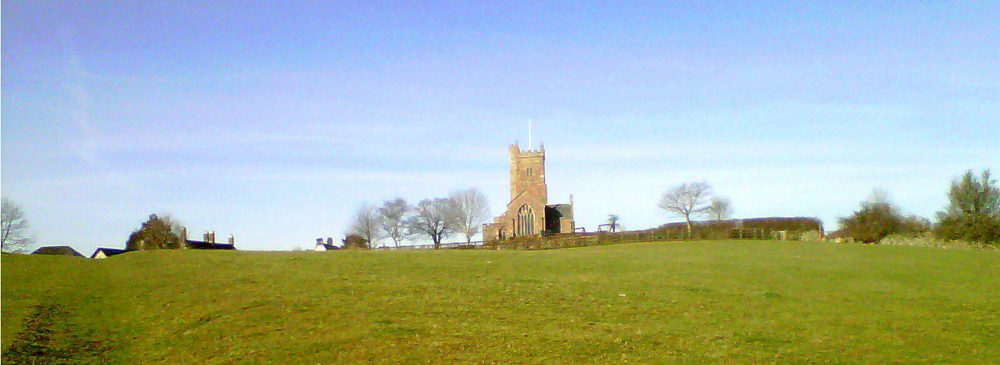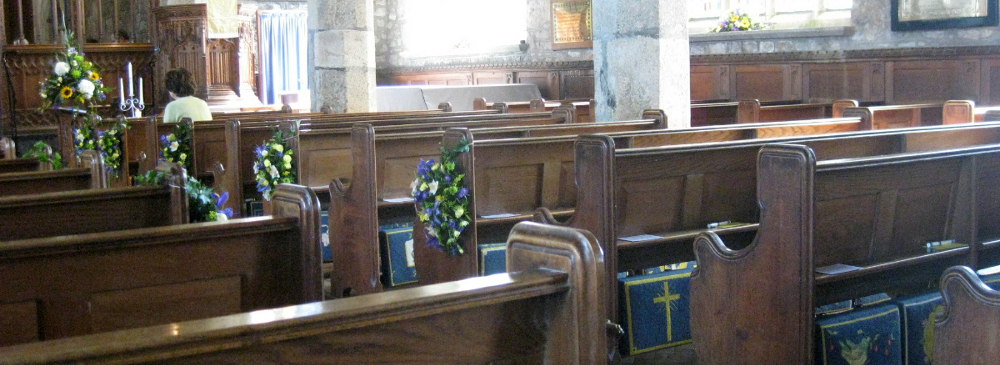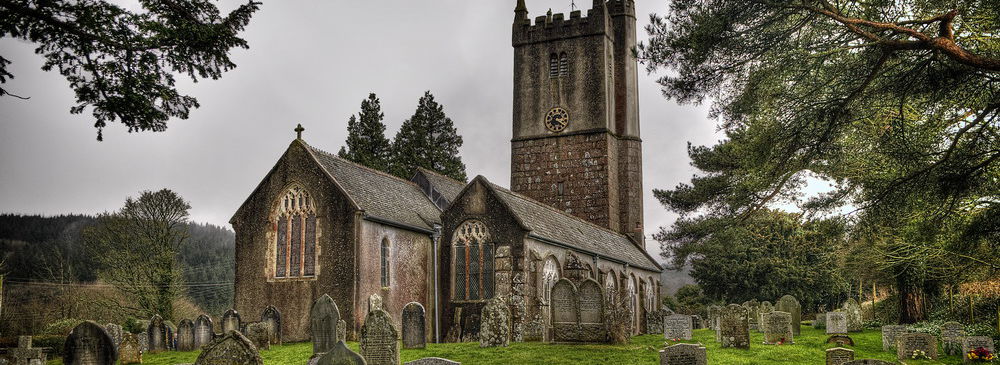 The Parish Church of St John the Baptist, Lustleigh, now a Grade 1 listed building, stands in a graveyard which is roughly oval and which is surrounded by a road. Enclosed graveyards of this type are called ‘lans’ and are well known west of the Tamar and in Wales. There is every reason to suppose that Lustleigh was a fifth or sixth-century Christian graveyard and quite possibly occupied the site of an even earlier pagan place of burial.
The Parish Church of St John the Baptist, Lustleigh, now a Grade 1 listed building, stands in a graveyard which is roughly oval and which is surrounded by a road. Enclosed graveyards of this type are called ‘lans’ and are well known west of the Tamar and in Wales. There is every reason to suppose that Lustleigh was a fifth or sixth-century Christian graveyard and quite possibly occupied the site of an even earlier pagan place of burial.
The earliest part of the present church is the 13th-century chancel. Unusual features are: a double piscina on the south wall; pierced corbels above either end of the communion rail for the hanging of a Lenten veil; a triple sedilia in the south wall, and an Easter sepulchre in the north wall.
Datuidoc’s stone stands at the west end of the north aisle, having been removed from a position in the paving below the inner doorway of the church porch to preserve it from further wear. It belongs within a well-recognised series of commemorative stones erected in the post-Roman period between about AD 450 and 600. The Latin inscription probably read, Datuidoci Conhinoci filius, ‘The stone of Datuidoc the son of Conhinoc’. Lustleigh is one of only four church sites in Devon with an inscribed stone.
Extracts taken from A Brief Guide to the History and Architecture of the Parish Church of Saint John the Baptist, Lustleigh – available from the church, price 50p.
Churchwardens

Jane Riley














